Santa Fe occupy 11th place in Categoría Primera A Clausura after playing 19 matches with 24 points after finishing the Apertura in the tenth position with 26 points. Hence, they haven’t had a great season after finishing first in Clausura last term.
Despite this bad season, they have scored the most goals from corner kicks in Categoría Primera A this season with eight goals, with América de Cali, Medellín and Millonarios. They have scored 50 goals in total in Categoría Primera A, in seventh place in the goalscoring ranks, so you can imagine how the situation would be worse without their record in corners because they’ve scored 16% of their goals in Categoría Primera A this season, Apertura and Clausura, by corner kicks.
In this tactical analysis, we will discuss how they’ve used screens brilliantly against man-marking defending systems, floated crosses and their different tactics in short corners, showing why that’s been so successful and also how opponents tried to deal with those ideas.
Unique use of screens
The use of screens has been common against man-marking defending systems all over the world inspired by basketball, but they use screens in a clear, sincere way, so let’s remember the definition of a screen then how they use it.
A screen is asking a player to go to his mate’s marker to catch him, push him or stand against him to free his mate from marking; let’s know how they use screens in the below case.
In the first photo, the targeted player is highlighted in red while his mate, who will act as a screen, is highlighted in blue, so the first thing we note about their use of screens is that the screen player starts in the targeted area to empty it for his mate.
In the second photo, the second note is that the screen player starts as the taker moves to giving his back to the ball, giving no care to anything except his mate’s marker tracking him to stand against him, preventing him from tracking his mate who is the targeted player, as shown in the third photo in which the screen is done, so he gets the ball easily, as shown in the fourth photo.
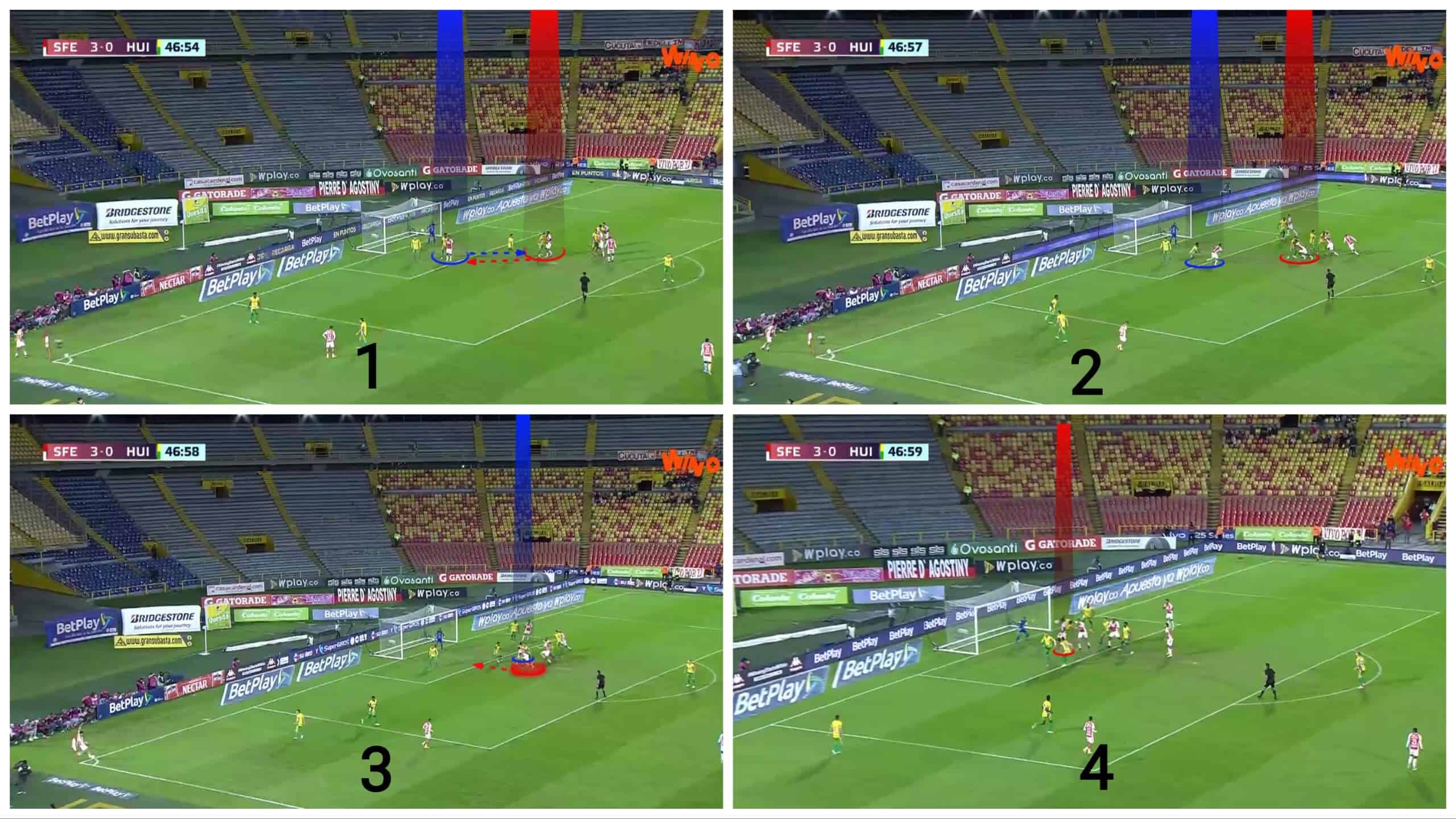
The result is a goal, as shown below.
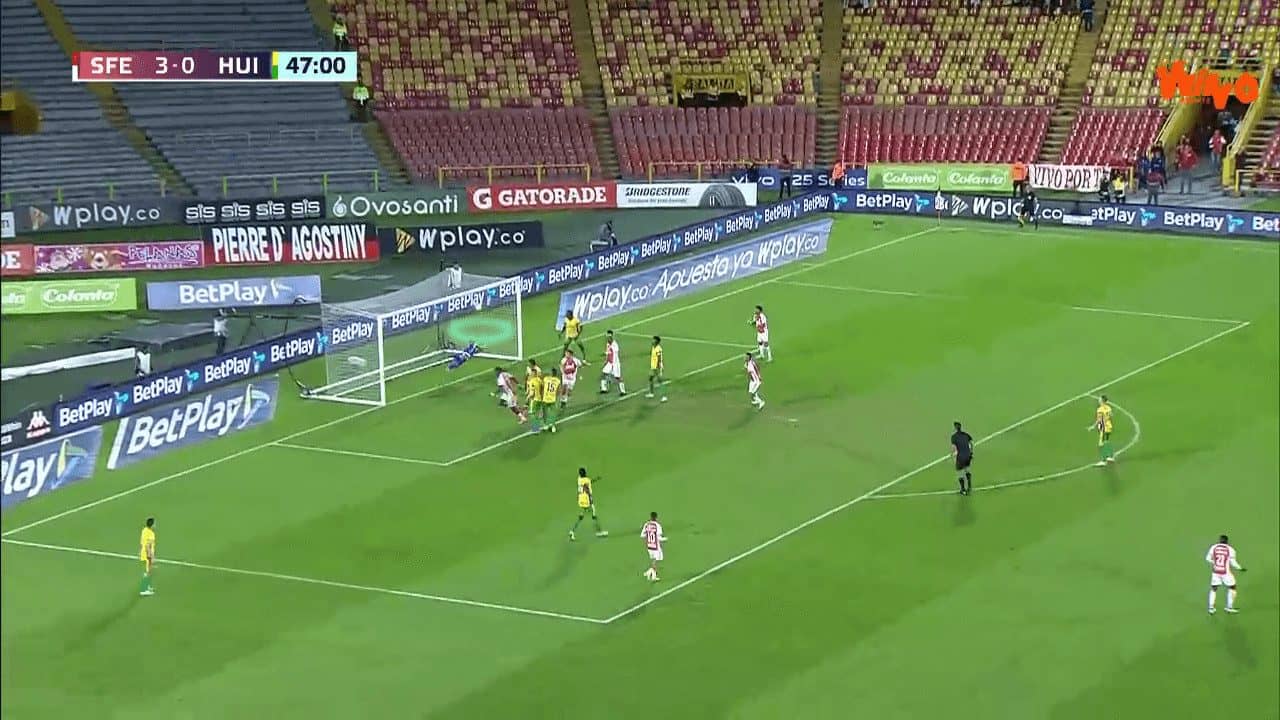
In this example, they have a different routine using screens. In the first photo, the targeted player, highlighted in red, stands far from the targeted area. In contrast, the yellow player stands initially in the targeted area to move, then drags his marker away from it to make sure that the targeted area is empty; this is one of the disadvantages of the man-marking defending system, which is that you can empty any area quickly, so you have only to free your targeted player from man-marking as represented here by a screen by the blue player, as shown in the rest photos.
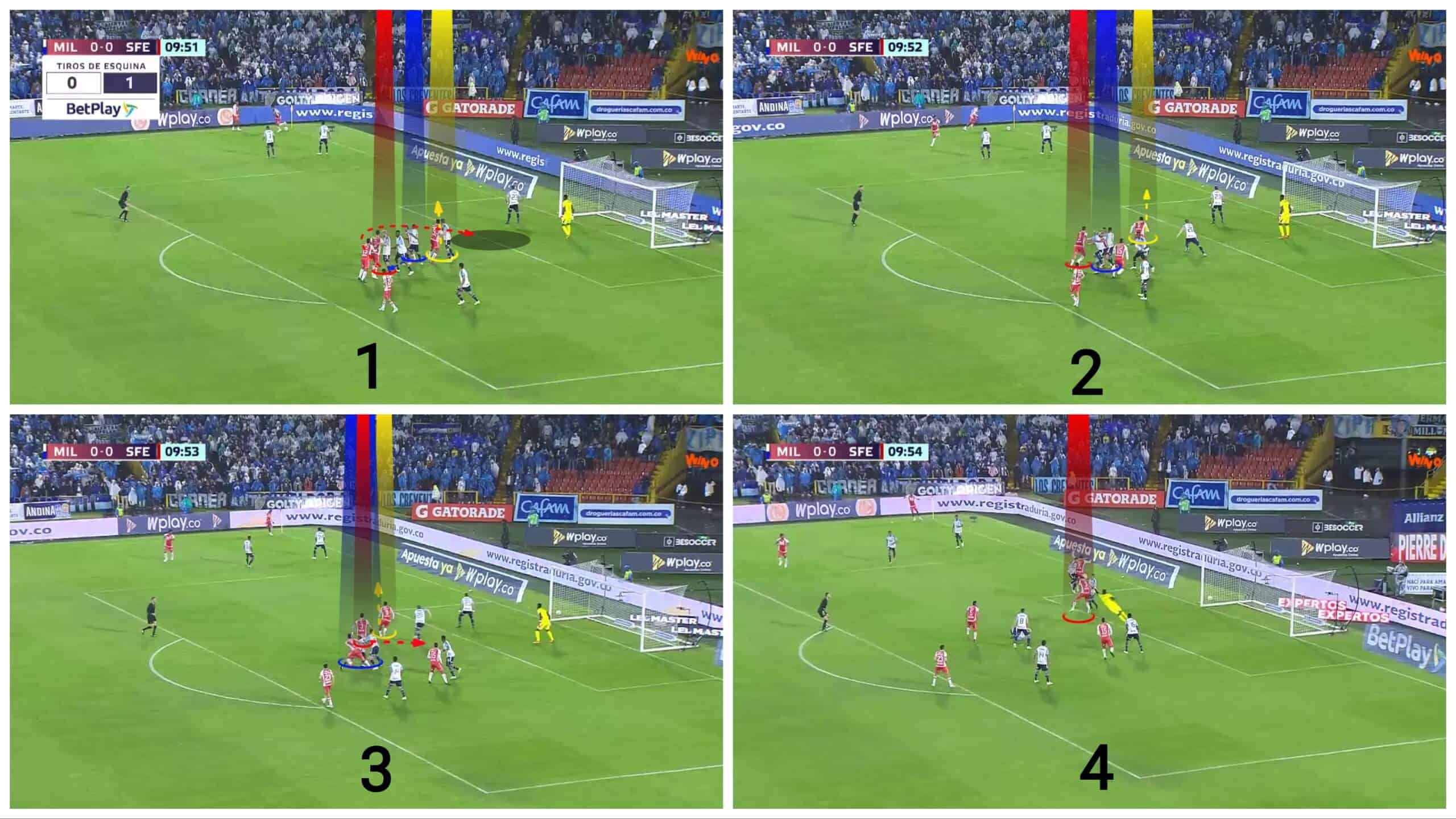
But the ball hits the crossbar, as shown below.
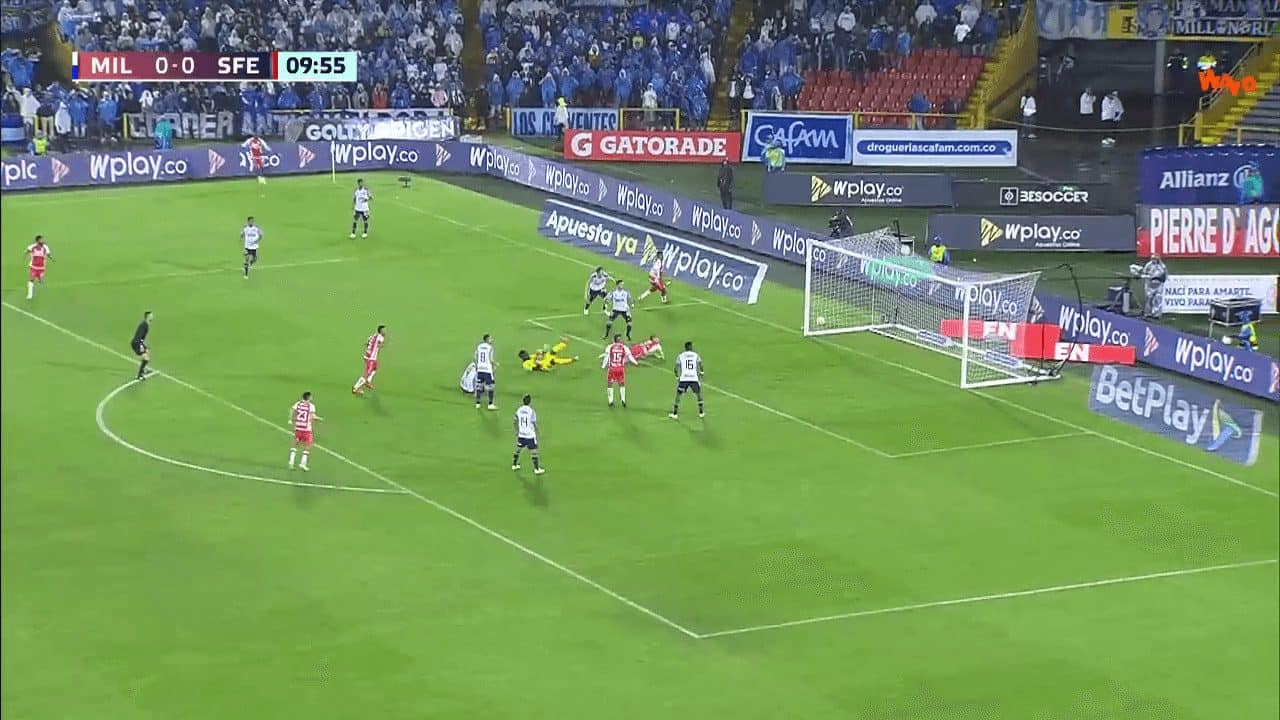
Floated crosses
Teams usually use floated crosses when they have excellent players in aerial duels, so they also prefer to use floated crosses to target José Aja because floated crosses take too long time in the air, allowing him to measure where the ball lands at a suitable height, use his strength to escape from markers and jump from a steady mode with his marker as a mini-match between them to isolate them showing his ability in aerial duels which is called a mismatch. He can also start at a far area to be in his marker’s back when his marker tries to track the ball, which causes an orientation problem for him.
In the first photo, José Aja, the targeted player, stands with a group of his mates in a pack. He starts to move back when the taker touches the ball. At the same time, his mates move forward in different ways, dragging their markers, so you can see a 1v1 conflict in the second photo in which you can also note that moving back while the ball is in the air, in blue, forces his marker to give him his back to track the ball which makes the jump more straightforward, as shown in the third photo.
These floated crosses are difficult to shoot directly into the goal, so we need a second targeted player moving in front of the goal, exploiting their focus on the first targeted player, as shown in the third and fourth photos.
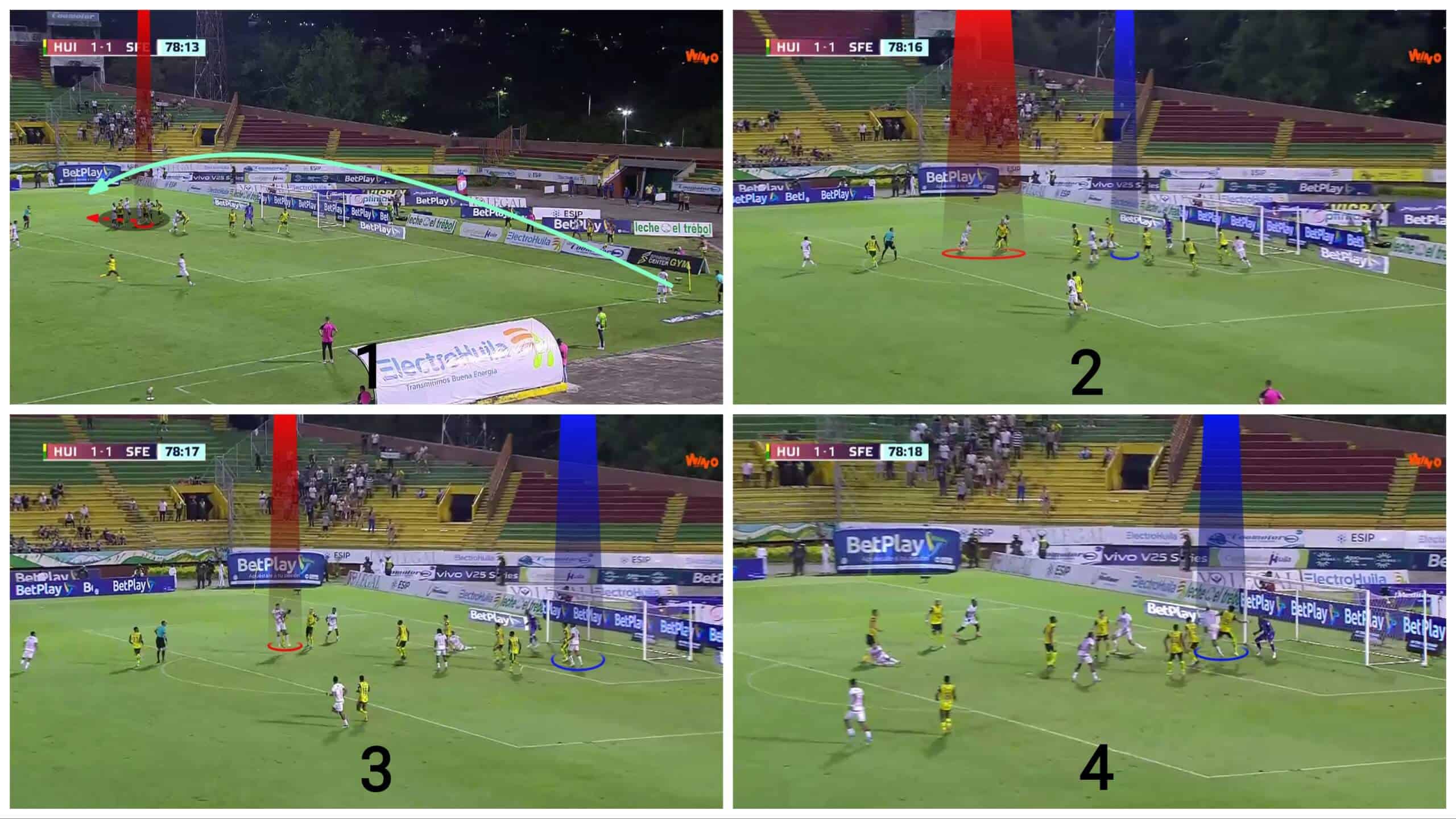
The result is a goal, as shown below.
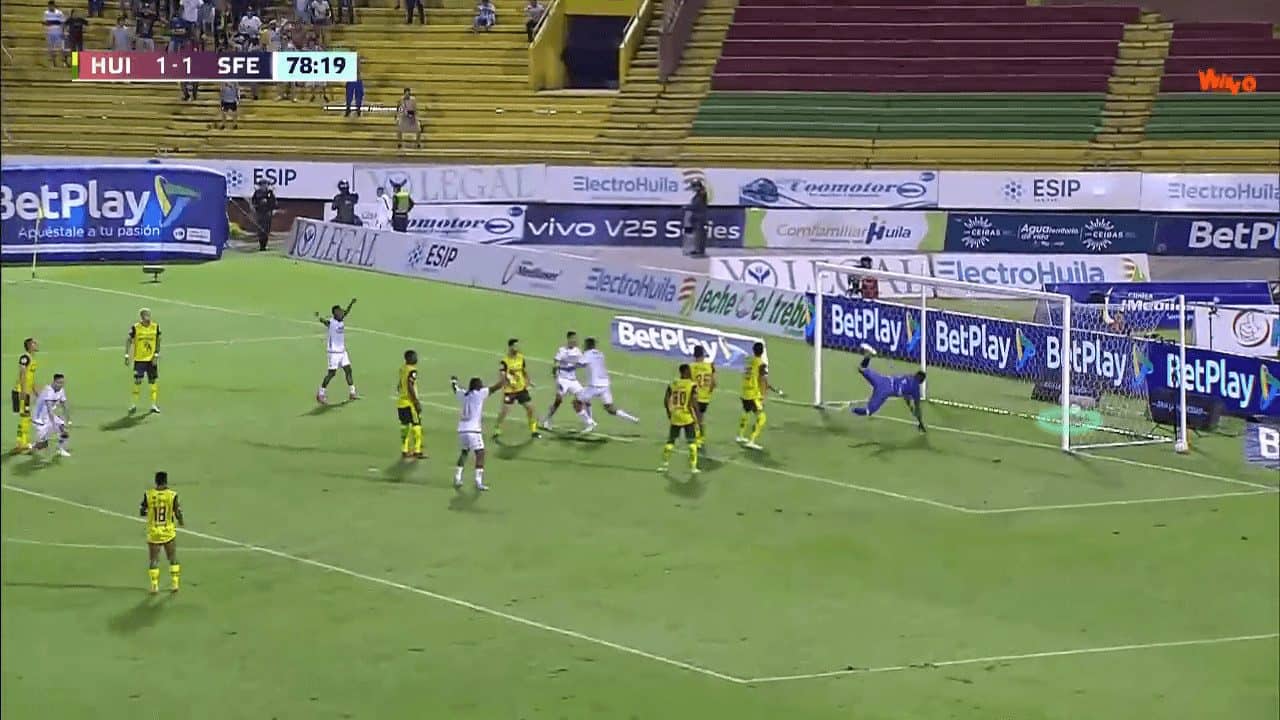
In the case below, they use floated crosses differently because the opponent defends with the hybrid defending system. Let’s know how they deal with that.
In the first photo, the opponent defends with five players in a zonal marking in the first zonal line, two zonal players in front of them to cover the near post, a man marker and two short-option defenders, so they target the area in front of the far post, but the only obstacle they have is the last zonal player, number 5, so they put a player, highlighted in green, in front of him to attract his attention, as shown in the second photo. We can also note that José Aja starts from a late position to be free from man-marking and to come from movement.
In the third photo, the zonal defender is still in his zone, neglecting the player they put, but the floated cross plays his role, as you can see in the 1-v-1 situation in jumping, so José Aja gets the ball, as shown in the fourth photo.
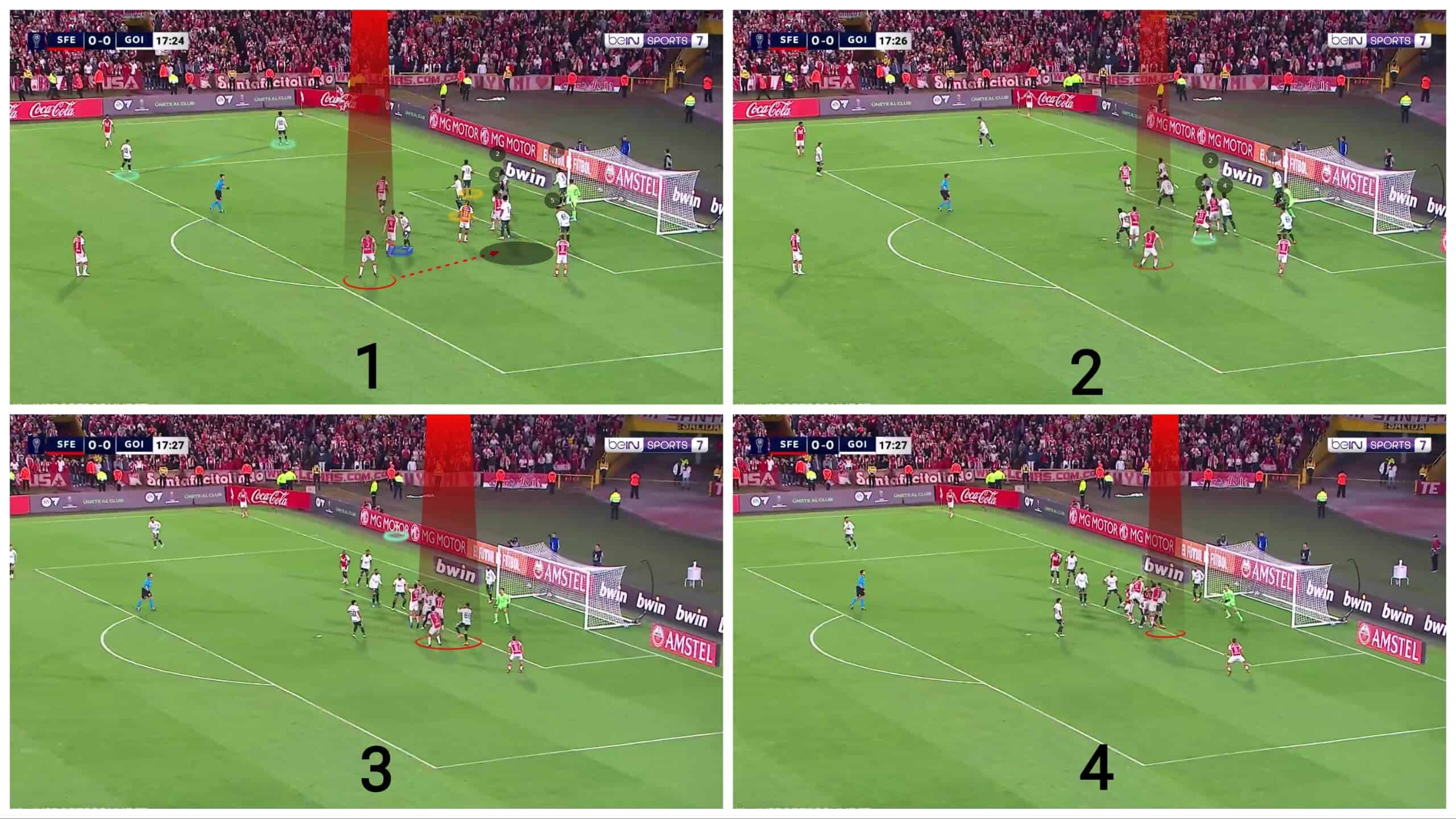
But the ball goes near the post, as shown below.
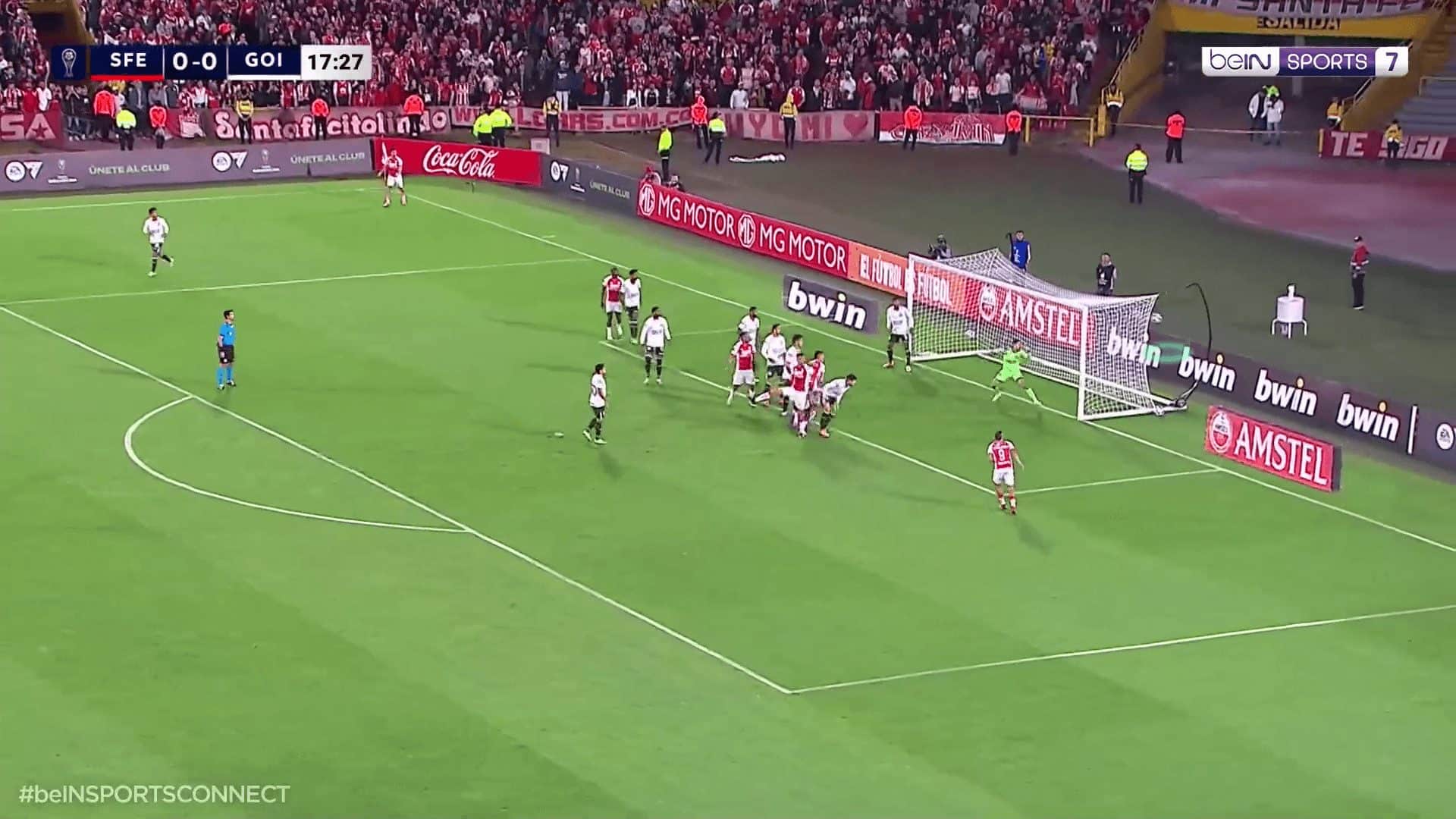
Combined idea
They also have an excellent routine using the two previous ideas, screens, and floated crosses.
In the first photo, they try to use a floated cross against a man-marking defending system but into a nearer area. Hence, they have to help José Aja with a screen to increase his possibility of getting the ball in a closer area shooting the ball directly into the goal.
In the second photo, the blue-highlighted player neglects the ball going to do the screen to free his mate, as shown in the third photo, but the marker is too strong, so he pushes and keeps tracking his marker, getting the ball out by his head, as shown in the fourth photo.
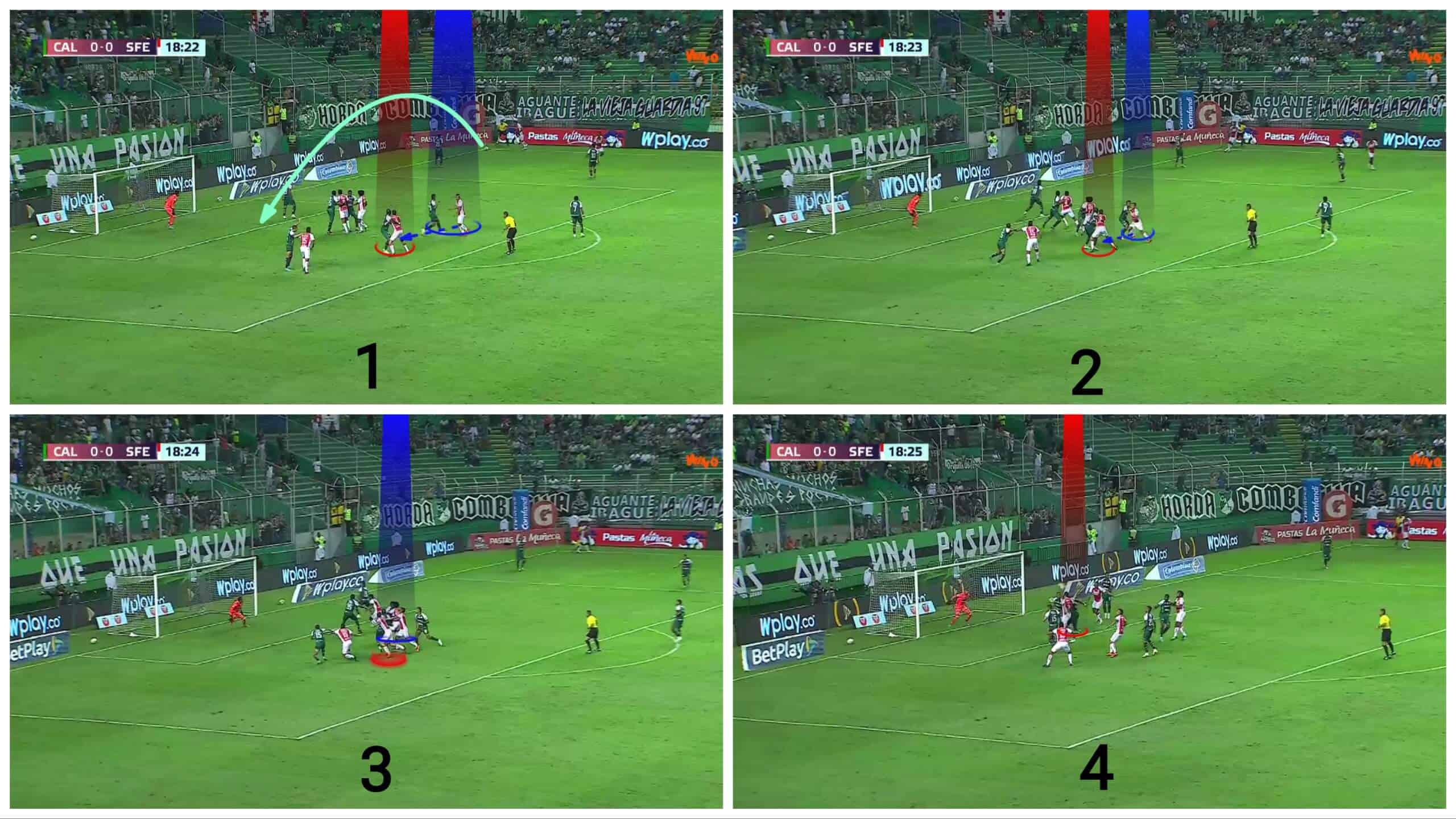
How to defend against them
As we have said, the most significant advantage of floated crosses is that they start to land from a high level, which causes chaos, allowing the player who jumps better from a steady state so you can now guess the defending solution, which is someone who can get the ball quickly from a higher point from movement killing the problem in its infancy and this one is the goalkeeper.
In the case below, Santa Fe targets José Aja, in green, who exploits the floated cross to stand in his marker’s back to cause an orientation problem because he can’t track both him and the ball, as shown in the second photo below.
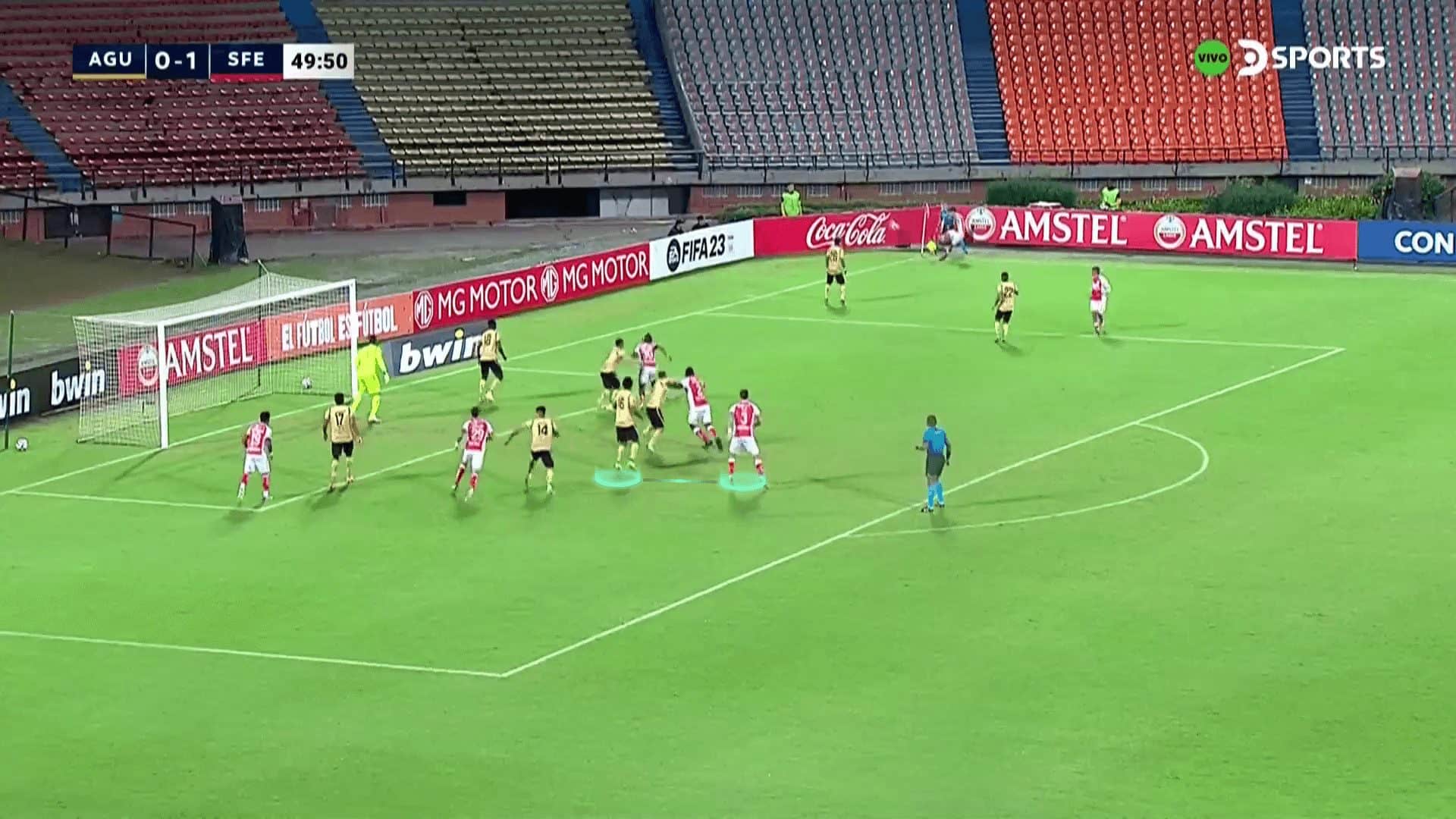
Here, when the goalkeeper sees the floated cross, he exploits this time to get the ball from the highest point.
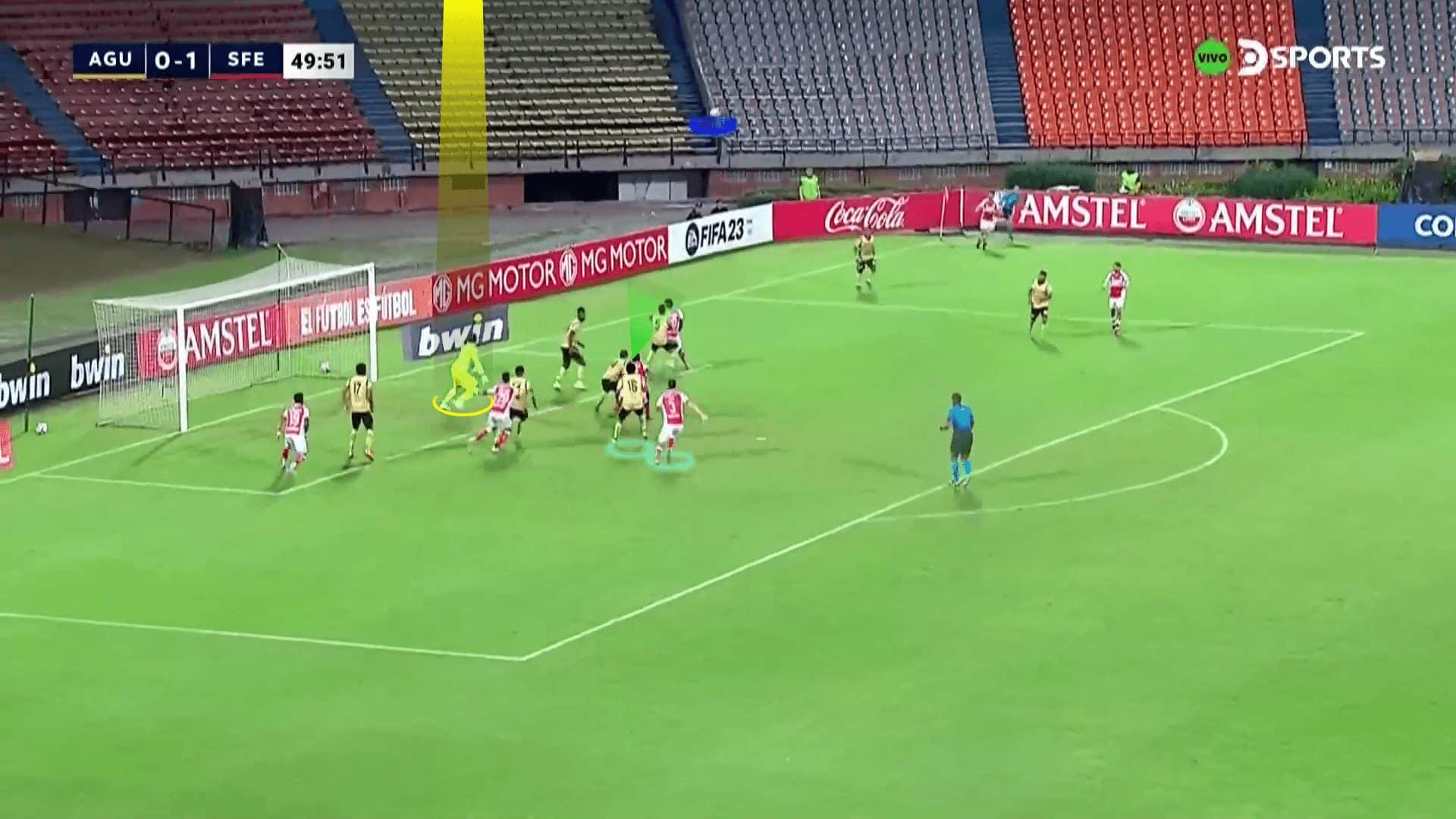
He gets the ball band and punches it away, solving the problem from the start, as shown below.
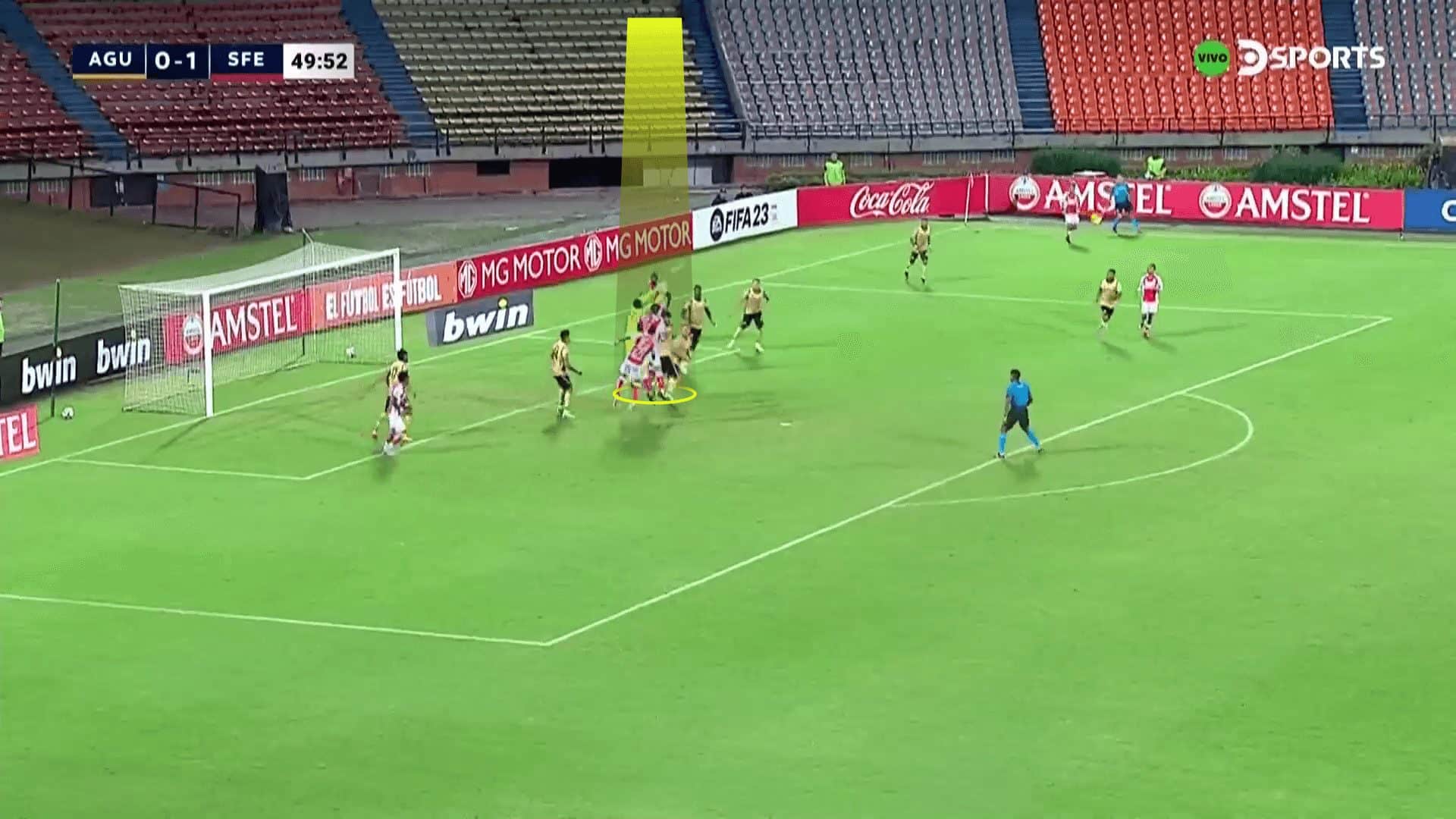
Short corners
As we have said, they have different and diverse ideas in attacking corners, so here we will focus on an excellent, unusual idea in short corners.
In the first photo, the opponent defends with the hybrid defending system using three players in the first zonal line, four man-markers and three short-option defenders because Santa Fe overloads this area, putting three players in the short zone, one out of the shot. Santa Fe’s idea is to throw the ball to the free players in the targeted area in black.
In the second photo, the taker moves inside, in blue, to be a pass option and gets the rebound ball if it happens.
In the third photo, the red player receives the ball, so the first zonal defender starts to get up to face him, but it is too late, so he turns around and shoots the ball while the other attackers are blocking their markers to prevent him from moving up to him, as shown in the fourth photo.
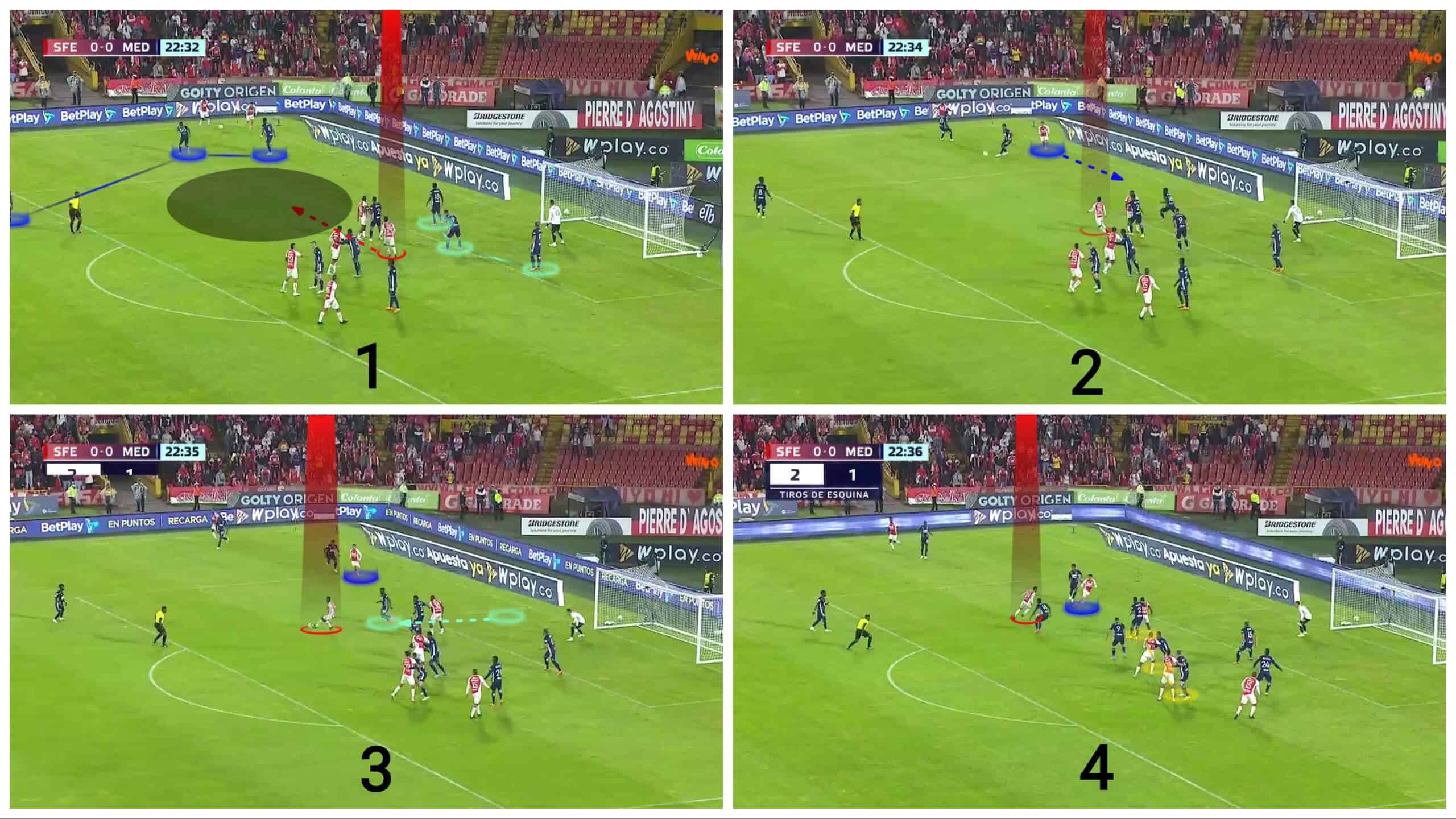
The goalkeeper saves the ball, but the taker, indeed, gets the second ball and shoots into the goal, scoring a goal, as shown below.
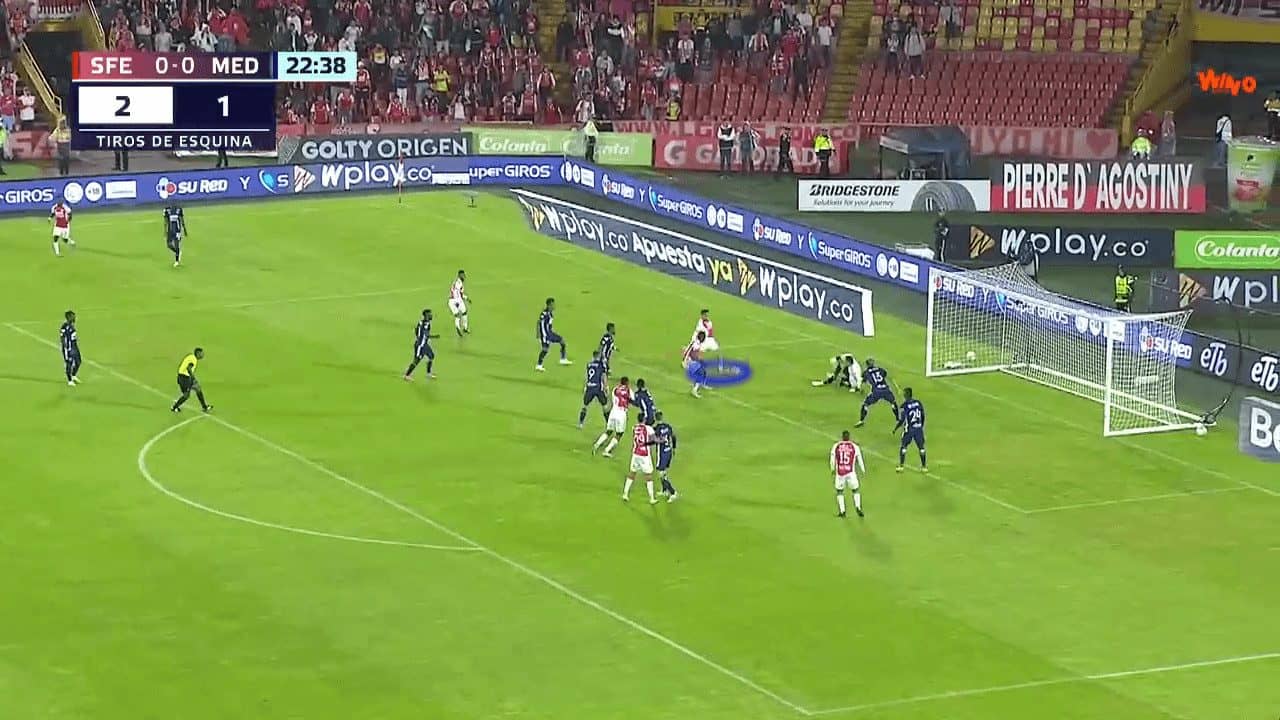
Conclusion
In this analysis, we have demonstrated the excellence of Santa Fe’s team in set-pieces, especially the attacking corners, despite being in the eleventh position in Categoría Primera A, Clausura, and how they have become the most team to score goals from corners in Categoría Primera A this season.
In this set-piece analysis, we have also explained how they have used screens clearly against man-marking defending systems, floated crosses and short corners, and how opponents tried to deal with those ideas.

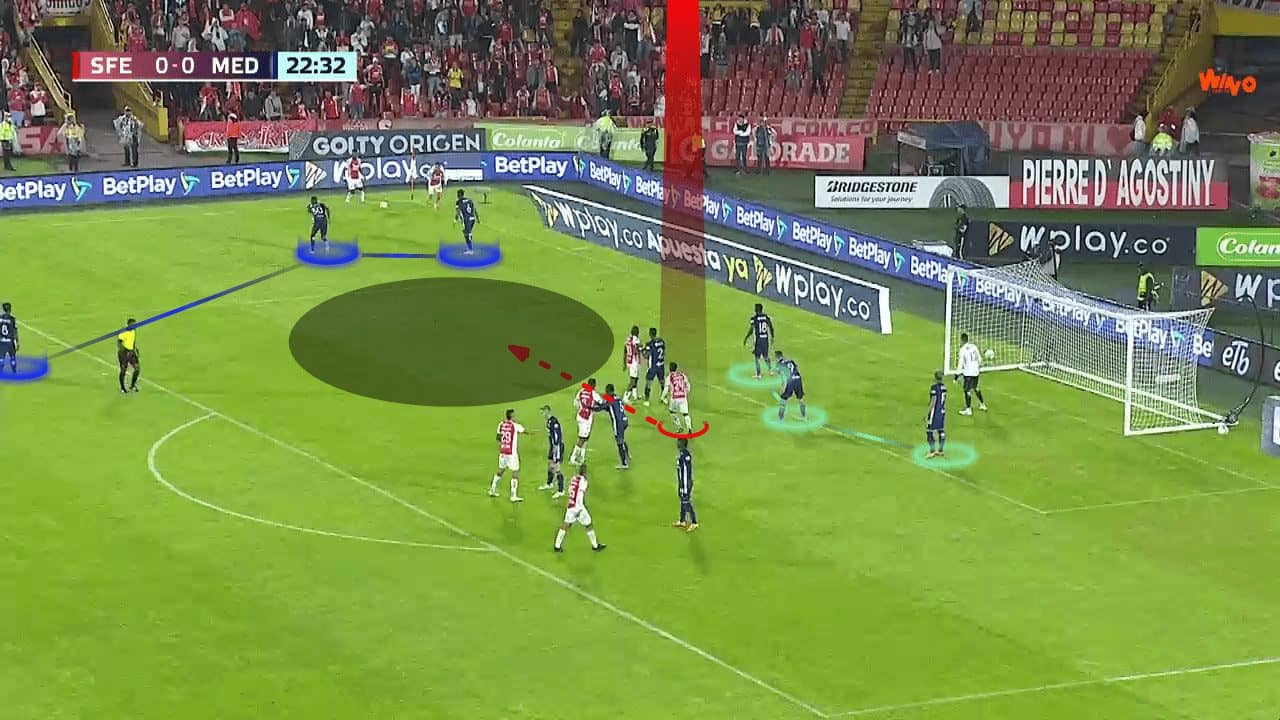




Comments